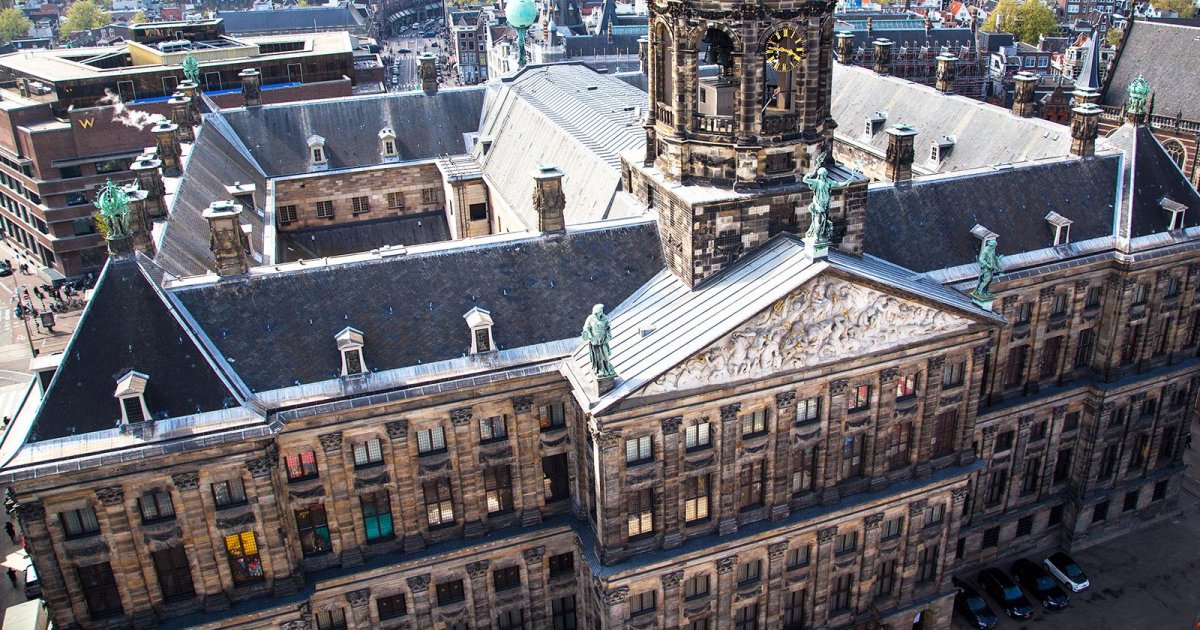ROYAL PALACE, Introduction
 Language: English / USA
Language: English / USA
Hi, my name’s Scott, and I’m your personal guide. Along with MyWoWo, I’d like to welcome you to one of the Wonders of the World: the Royal Palace
The Royal Palace of Amsterdam is considered an absolute masterpiece of Dutch Baroque and of its architect, Jacob van Campen.
In the 17th century, when the palace was built, the Netherlands was actually a republic, and it was to serve as the new City Hall, replacing an earlier Gothic building. It did not become a royal palace until 1808, when Napoleon conquered the Netherlands and placed his brother Louis on the throne of Holland. After the defeat of Napoleon in 1813, it became the residence of the Dutch royal family, who since 1981, however, have lived in a large villa near The Hague.
This enormous City Hall, built on 13,659 wooden piles driven into the ground to strengthen it, symbolized the independence and power of the country, which was at the peak of its political and commercial success.
The famous Jacob van Campen, the leading architect of the Dutch Golden Age and heavily influenced by classical Italian models, presented an ambitious project, inspired by the City Hall of Antwerp, in Belgium, and built the largest administrative building of the time.
As you can see, the building has an austere, solemn facade. The bronze statues at the top symbolize the virtues of good governance, Peace, Justice and Wisdom, while the bas-reliefs are a celebration of the glory of Amsterdam, with deities of the sea and allegories testifying to the nation’s command of the seas.
The seven arches at the entrance are a homage to the seven provinces of the Netherlands that became independent after a long war against Spain.
The building is topped by an octagonal tower with a 52-meter-high dome that served as a watchtower for ships.
The Palace also has a facade on the back, topped with a statue of Atlas carrying the World, flanked by Sobriety and Vigilance. Depicted on the triangular tympanum above the door is the Virgin personifying the city, at the foot of which you can see the statues of the Amstel River and the IJ Lake.
The palace is owned by the Dutch state, and is open to visitors when public ceremonies are not being held there.
An interesting fact: inside the dome is the famous 47-bell carillon, dating to 1664. Just nine of the bells are original, however, while the other 38 were replaced in 1965.



